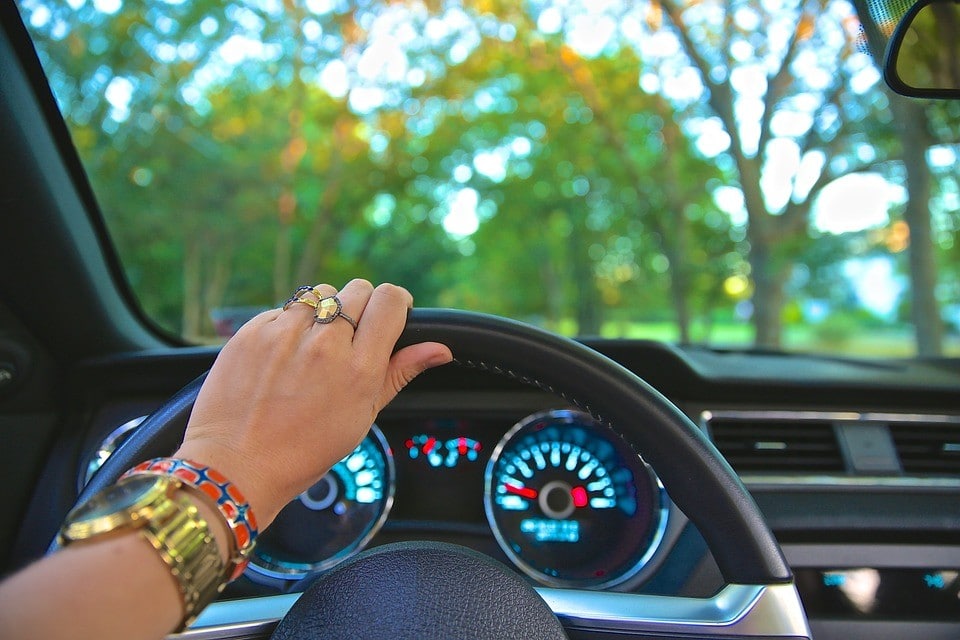Jasmine Birtles
Your money-making expert. Financial journalist, TV and radio personality.

Ride sharing apps are an increasingly popular way to get about or, for many, to make extra cash.
Uber is by far the most used in the UK and has revolutionised our relationship with taxis. The convenience, choice of luxury vehicles, and cheaper prices have made it a go-to for many people taking cabs.
As Uber’s popularity grows, competitors are cropping up all the time. This can make it difficult to choose which one to drive for.
If you’ve ever considered driving for one of these companies yourself and want to get started, read on.

Of course, you’ll need a driving license, and having a few points on it isn’t necessarily a barrier to entry. Each case it examined differently, so it’s always worth applying. You will need to get a DBS check as part of the process.
Beyond that, each platform has its own specific requirements. But as a minimum you’ll usually need to be aged 21 or over and have at least a year of driving experience, or three years if you’re under 23.
The car you have may affect the tier you drive for with companies like Uber, but generally it doesn’t need to be super flash. They recommend the car wasn’t made before 2008, and of course it will need to be in good condition and have a valid MOT.
The ride sharing economy can be competitive, so newer cars may get more customers. But the main thing is it’s in good condition and kept clean so you get that all-important positive feedback from passengers.
Some drivers prefer to rent a car, which may be a better option than upgrading your current vehicle. But you will need to factor rental costs into your budget.
Finally, you’ll need to apply for a private hire license through your local council. The process varies depending on if you’re in London or not, and Northern Ireland has its own rules. Check out the government website here for more info.

Everyone knows Uber, and they have a wide spread in the UK. They’re particularly popular in London, as well as Birmingham, Cambridge, Newcastle, Liverpool, Edinburgh, Glasgow, Cardiff, and Belfast among many others.
Alternative companies include Kapten, Bolt, ViaVan, and Gett. Here’s a rundown of their differences:
As of April 2016, Uber takes a 25% cut of your earnings. They have a wide reach around the UK and many customers are used to travelling with them. That said, the competition may be higher with Uber as there are lots of other drivers vying for business. But they’re currently the only real option for drivers outside of London.
This is a similar platform, but Kapten offers cheaper fares for passengers and take a lower cut from drivers, just 15%. This works out well for both parties, and Kapten may simply be offering better rates as a way to undercut Uber as the market leader.
What’s more, unlike Uber they cover drivers’ Congestion Charge costs.
Another similar platform shaking up the market, Bolt also offers a low 10%-20% cut and cheaper fares for passengers.
Bolt doesn’t outright pay Congestion Charge costs, but tops up your fare a little when you travel through low-emission zones to help with the cost.
ViaVan takes a different approach, styling itself as a kind of on-demand bus service. The cut is 15%, so again lower than Uber. Generally passengers travel in larger vehicles and share their trip with others, which can be very cost effective for them. There is also a private hire option.
To drive for Gett you have to already be a black cab driver. That said, if you do happen to be a cabbie then Gett can be a good way to get extra work and jump on the app-based taxi revolution. So, not one for most people but worth a mention here.

It varies from platform to platform, but most companies have an online form where you fill in your personal and vehicle details. You’ll often be invited to an in-person session to be trained on the basics, including what to do if a passenger falls asleep!
Each platform gives details on the documents you’ll need. It can take up to 16 weeks to get the private hire license, but it’s usually shorter than this. Registering with the companies themselves once you have the license usually takes a few days.
As with a lot of self-employed positions, there’s a lot of flexibility in your work. Some people drive as a full-time job, while others do it as a side gig.
You can keep regular 9-5 hours or drive through the night. It can also work well for people with unusual or unpredictable hours, say those on zero-hour contracts who suddenly need a bit of extra cash. Once you’re registered, you just hop in your car, turn on the app, and start driving.
But whenever you work, it’s vital that you don’t overdo it. Having passengers is a big responsibility and you should keep your total hours within sensible limits and stop when you get tired.
The situation is on-going, but drivers for ride sharing apps are currently considered self-employed contractors. That means signing up with HMRC and filing a tax return each year. This definition may change in the future but it’s something you’ll have to do for the time being.
You’ll also have to earn enough to cover your own holidays and sick leave, as you won’t be entitled to this through self-employed work. This is worth factoring into your calculations when deciding if ride sharing will work for you.
For an overview, check out our free eBook on becoming self-employed here.
Another thing to note is that Uber is currently undergoing legal challenges and their future in London and the rest of the UK is uncertain. At the time of writing, though, they’re still operating.

The all-important question: What’s your earning potential with Uber and other ride sharing apps?
The short answer is it really depends. Those with a newer, higher-end car who drive full time in London will earn the most.
To take Uber as an example, they claim their London drivers earn an average of £15 an hour. But a recent study by Oxford University found that after expenses, it’s more like £11 an hour.
To take Newcastle as an example, Indeed puts the average earnings at £12.50 per hour, but that doesn’t seem to take expenses into account.
Given that you can only drive so much per week without overdoing it, it’s up to you to decide if the possible earnings are worth it. But as a side gig, it may help boost your income.
The Oxford Uni figure makes it simple to estimate earnings because it takes expenses into account.
For the below, we’ll assume seven hours of driving a day, five days a week as a full-time job. You should be taking breaks for food and to avoid fatigue, plus days off in the week.
Driving for 35 active hours a week at a rate of £11 is £385. Assuming you took four weeks off a year for holidays and sick leave, that would be £18,480.
Taking the Newcastle example, assuming expenses take about £4 an hour off your total wage, the realistic yearly figure would be about £14,280.
At the time of writing, you only pay income tax on earnings above £11,850. The money in your pocket per month in London would be £16,104 a year. In the Newcastle example it would be a total of £13,248.
It’s important to note that these figures are approximate. Many factors including type of vehicle, location, and the time of day you drive will raise or lower your income.
Peak times with higher fares include morning and evening commutes, Monday mornings and Friday evenings for airport runs, and dinnertime at the weekend.
Platforms like Kapten and Bolt are less studied, but may well offer greater earning potential given that they take a lower cut. They’re less used than Uber, but there are so many potential passengers in London and the apps’ popularity may well continue to grow.
For some, these figures may be too low to be a full-time salary. But depending on your circumstances, for example if you have low expenses or a partner contributing to the household income, this may be a good option for you.
Driving part time and supplementing another part-time role may also work for you.
It’s really important that you take into account the expected costs when driving, which will definitely include at least a few of the following:
Remember that many of the extra costs incurred for the sole purpose of your work is tax deductible. The government’s website has a handy section on expenses when you’re self-employed. Do give them a call if you have any further questions.

Ride sharing platforms often allow passengers to tip. As well as covering the basics like having a good quality car that’s clean, and driving safely and professionally, there are a few things you can do to make a good impression:
Only you can answer this. Taking a realistic look at the figures once expenses are taken into account, and adjusted based on your own circumstances, can give you an idea of earning potential.
It’s important not to get bamboozled by the impressive numbers posted on companies’ websites, as they often don’t include those all-important extra expenses.
It may be that the earning potential is too low for you. But if you’re looking to supplement your existing income, having a go at driving for these companies could bring in some extra cash.

Interesting, I’d only heard of Uber before.